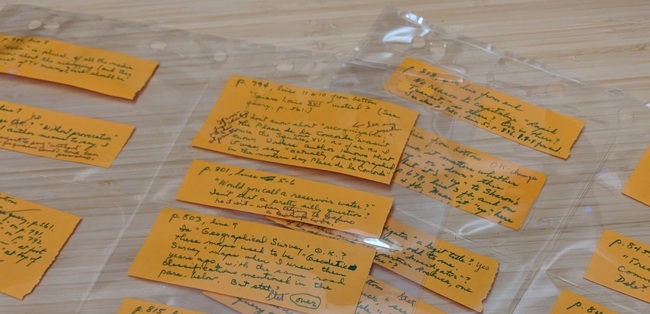When you’re a best-selling author publishing in the 1960s – 1980s, you can get a lot of editing help. At least you can if you’re Irving Wallace. While processing the series based on his book titled The Fan Club, I noted at least 3 editors working with Wallace at different stages. To begin, after he finished an original draft, he went back through it, his wife Sylvia went through it, and usually Wallace would hire an editor or have his secretary retype changes for him. Once the manuscript underwent several rewrites and he felt it was ready
enough, he’d send it along to the publisher who would then send his manuscript to one of their freelance editors (or in house if they had them).
Over time, Wallace got to where he liked the rapport he developed with particular editors and types of revisions or edits they would recommend. As it happened, the one he requested to work with (again) at Simon and Schuster was living in Mexico at the time. The reason I mention that is because some of her cover letters to Wallace often included apologies for lack of regular access to resources like paper.

Apparently his favorite editor was out of paper again. When her editing suggestions arrived for Wallace’s review, they were written on what he called “flyers.” Each flyer was 4″ wide and varying height. They ranged from ½ and inch to 5″ in height depending on how much the editor wrote. As it turns out, each little strip of paper was piece of scrap paper made from the large manila envelope in which one of Wallace’s drafts had undoubtedly arrived. This was, of course, in the 1970s before the advent of home computers or the Internet so editing work might be shipped all over the world between editors, agents, and authors.

That the editor painstakingly wrote out each line that required a suggestion is quite labor-intensive. But for every “flyer” the editor included, Wallace also carefully reviewed it then considered his response. Often he would converse back and forth through the mail with his editors arguing for specific spellings or turns of phrase. Other times he would simply take their suggestions and incorporate them into the next rewrite.
If ever a student thought they could continue going through life with the written-the-night-before paradigm and still be successful, they need only look to someone like Irving Wallace. In each of his book projects he details between 6-10 rewrites before the publisher ever sees it. Then there’s a process of at least 3-7 more drafts with changes and suggestions of his various editors. Additionally, Wallace’s beloved wife read every project with aplomb and enthusiasm, which would bring about another revision. Even at the stage of page proofs, Wallace would incorporate another 3 or 4 sets of revisions. I guess if you want to be a best-seller, that’s the kind of work ethic you need to have.